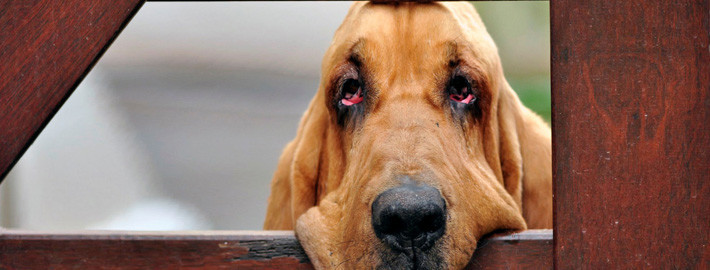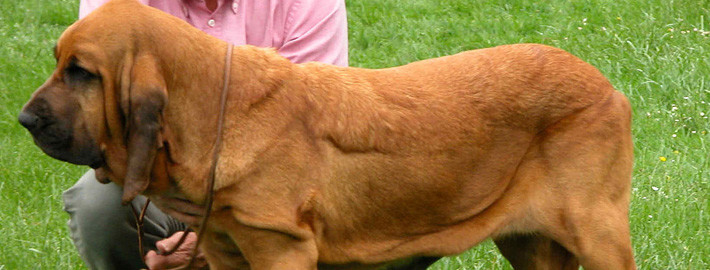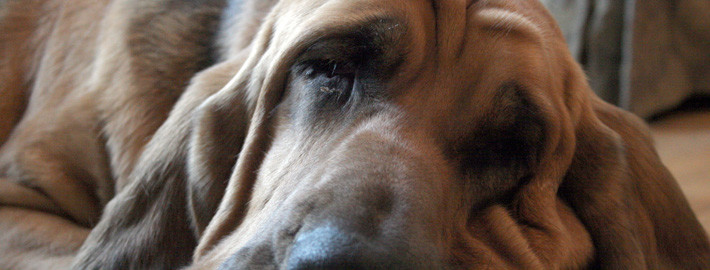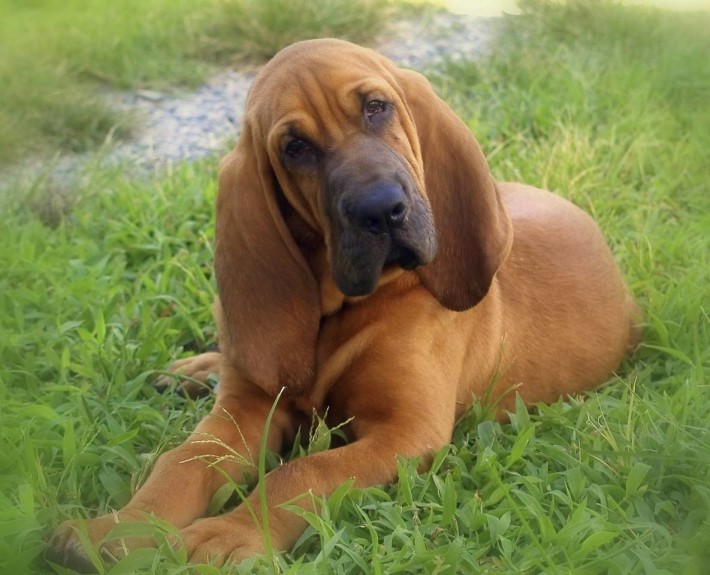What makes the Bloodhound Unique?
Bloodhounds have a lengthy history as tracking dogs and have been useful to law enforcement official over the centuries. Members of this breed excel at finding lost criminals, people, and pets.
Page Contents
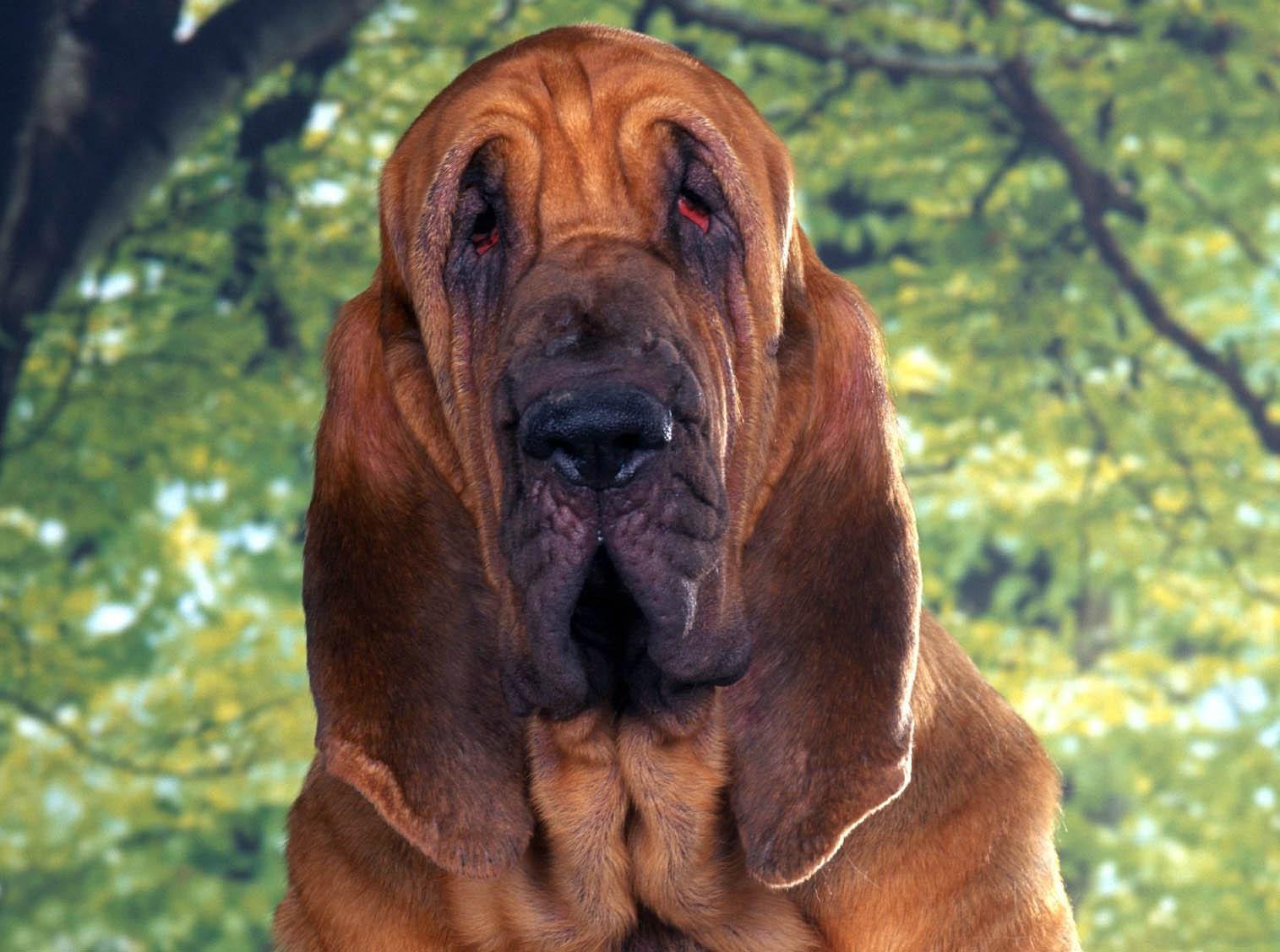
Is the Bloodhound Right For You?
Despite the fact that they are often called upon to track human beings and are wary of strangers, Bloodhounds have very docile temperament. According to the American Kennel Club’s breed standards these dogs should be “extremely affectionate” and not “quarrelsome with companions or with other dogs.” Bloodhounds are likewise good with children. Although they do not have incredibly high activity levels, they nonetheless make great playtime companions and good family pets. As is the case with any large dog, Bloodhounds will need to be supervised when they are around younger children to prevent any accidental injuries from occurring.
Bloodhounds don’t always do well in traditional obedience classes. Yet they are sensitive dogs and need patient training in order for them to succeed at any task. Owners should also note that Bloodhounds’ heightened tracking instincts make it incredibly easy for them to learn how to trail things.
In 5 Words
- Kind
- Patient
- Noble
- Mild-mannered
- Gentle
Characteristics
Learn About the Bloodhound
Description
General Description
Bloodhounds were developed for endurance and not speed. These tracking dogs have thick bones and a large skeletal system. They also feature loose, wrinkly skin around their necks and heads. Long ears are another breed feature and these appendages are thought to stir up latent odors as they trail across the ground. The Bloodhound has a thick coat that keeps them from getting injured when trekking through thick underbrush. These have a dignified expression and, though they are not breed for speed, they are capable of moving quickly.
Size
Bloodhounds typically weigh between 80 and 110 pounds (33 and 50 kilograms). However, individual dogs weighing up to 160 pounds (72 kilogram) are not unknown and the American Kennel Club judges prefer larger animals. Both male and female members of this breed stand 23 to 27 inches (58 to 69 centimeters) tall at their shoulder blades, or at the withers.
Coat
Bloodhounds come in red, tan, black, and liver variations. Saddle-shaped markings may also be present and white patches are permissible in various locations. Historically, a lot of other colors were available but breed standardization has reduced the occurrence of other hues.
Short History of the Bloodhound
These dogs came about as part of a breeding program set up by the Abbey of Saint Hubert in the 13th century. These monks would annually send a pair of their hounds to the French Kings. Some monarch didn’t always appreciate the dogs that were sent to them and Charles IX in particular wrote that the Saint Hubert’s Hounds were suitable for following prey but not actively hunting it. His contemporary, author Jacques du Fouilloux, agreed that the breed seemed to only be useful as tracking dogs. Saint Hubert’s Hounds were somewhat better regarded by Henry IV, who sent a number of the breed as gifts to his fellow monarch James I of England.
However, by the time the so-called “Sun king” Louis XIV came into power, Bloodhounds had grown rare and the master of the royal hounds rarely kept those that were sent to the king as a gift. After the French Revolution got underway, the absence of a king meant that the monk had nowhere to send their dogs. Besides, the country itself was in turmoil. Hunting with dogs was no longer a prime sport and this continued until the Napoleonic wars were over.
When game hunting became popular again in the 1800s, Saint Hubert’s Hounds were not highly regarded by most sportsmen. Baron Le Couteulx de Canteleu was one rare exception, yet he was discouraged to learn that there were only a few members of this breed left in France and those in the mountainous regions had been heavily crossed with other dog varieties.
Although the original strain died out around that time, the Bloodhound is widely considered to be a noteworthy modern descendant from that same historical lineage. The breed makes its own appearance as early as the 1300s in England where they were used to track game before the pack hounds were then released. These dogs were also utilized in Scotland for tracking people that the English rulers considered criminals such as William Wallace and Robert the Bruce.
The Victorians also put their Bloodhounds to work tracking people and it wasn’t too long before these dogs had found themselves a place as valued members of the local police force. Members of this breed continue to work in the same capacity to this day and any evidence these dogs find is considered acceptable in court.
Temperament
Despite the fact that they are often called upon to track human beings and are wary of strangers, Bloodhounds have very docile temperament. According to the American Kennel Club’s breed standards these dogs should be “extremely affectionate” and not “quarrelsome with companions or with other dogs.” Bloodhounds are likewise good with children. Although they do not have incredibly high activity levels, they nonetheless make great playtime companions and good family pets. As is the case with any large dog, Bloodhounds will need to be supervised when they are around younger children to prevent any accidental injuries from occurring. Members of this breed also tend to enjoy chewing on things.
Caring for Your Bloodhound
General Health
Bloodhounds typically live between 9 and 11 years. However, the main health concern in this breed is bloat. Owners can prevent problems from arising by feeding their dogs small portions of food two or three times per day rather than giving them their daily ration all at once. Another way to keep difficulties from occurring is to refrain from exercising Bloodhounds right after they have eaten. It is further recommended that owners purchase padded bedding for their dogs to keep them from having calluses on their joints. Other minor health concerns in this breed include hip dysplasia, ear infections, and entropion.
Care
Daily
Bloodhounds are energetic dogs that enjoy a nice long walk or run every day but care should be taken to keep them from overexerting themselves. It is also a good idea to clean their faces regularly. Depending on the individual dog, this procedure will need to take place as often as several times per day or as infrequently as once or twice per week.
Weekly
Brushing a dog’s teeth on a regular basis prevents not only bad breath but also the buildup of tartar. Bloodhounds also need to be brushed once or twice per week to keep loose fur from getting everywhere as they are modest shedders. Rubbing these dogs down with a chamois cloth will additionally keep their coats shiny.
Monthly
Most dogs require heartworm, flea, and tick prevention medications on a monthly basis.
Grooming & Bathing
Although Bloodhounds have a distinctive doggy aroma, they do not have to be bathed regularly. However, their floppy ears should be cleansed and checked for debris every so often. Their nails will also need to be kept trimmed.
Exercise & Training
Due to their stubborn natures, Bloodhounds don’t always do well in traditional obedience classes. Yet they are sensitive dogs and need patient training in order for them to succeed at any task. Owners should also note that Bloodhounds’ heightened tracking instincts make it incredibly easy for them to learn how to trail things. These dogs won’t stop following an interesting scent despite any environmental dangers that might arise so members of this breed should not be allowed to roam about freely.

